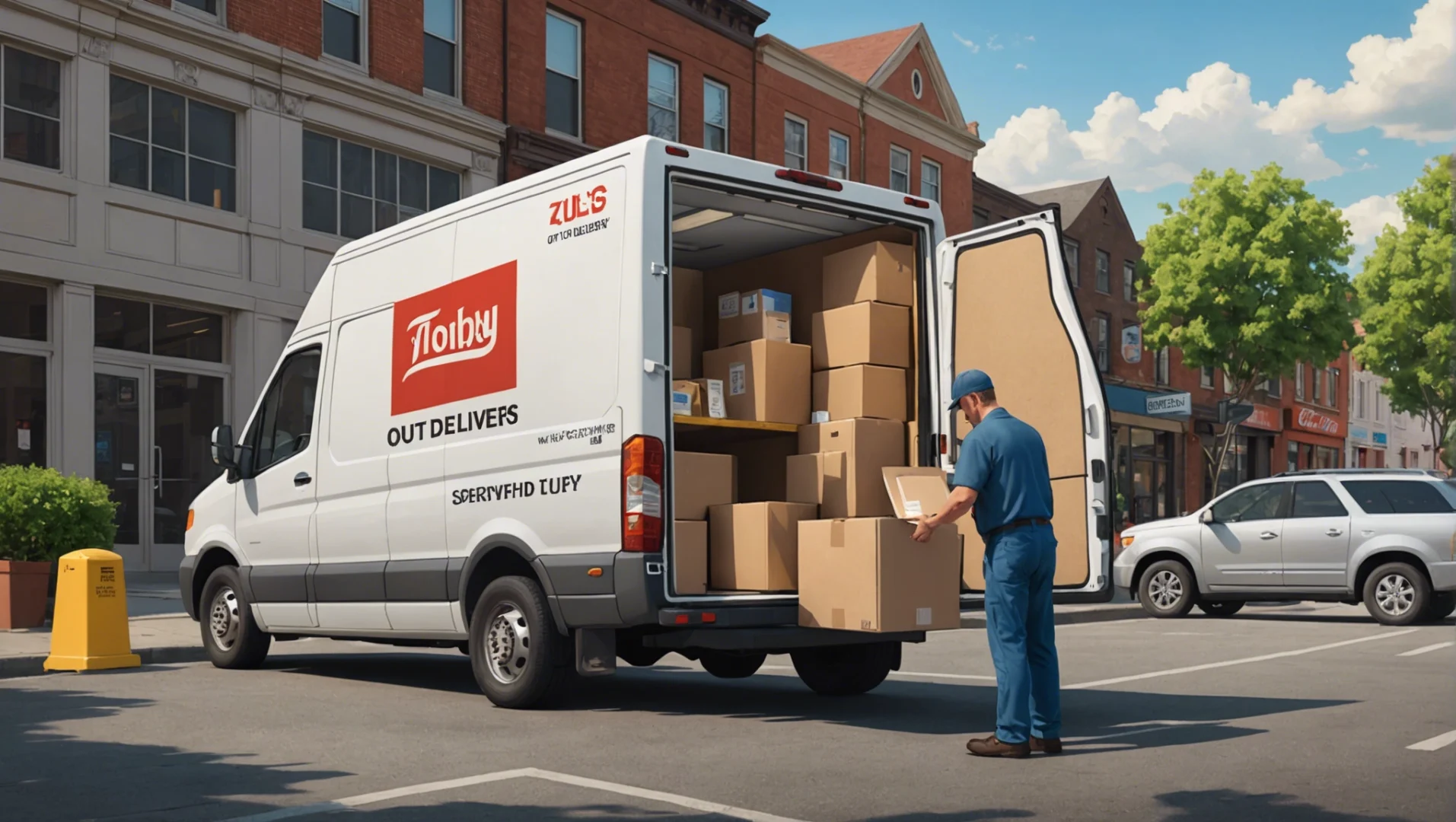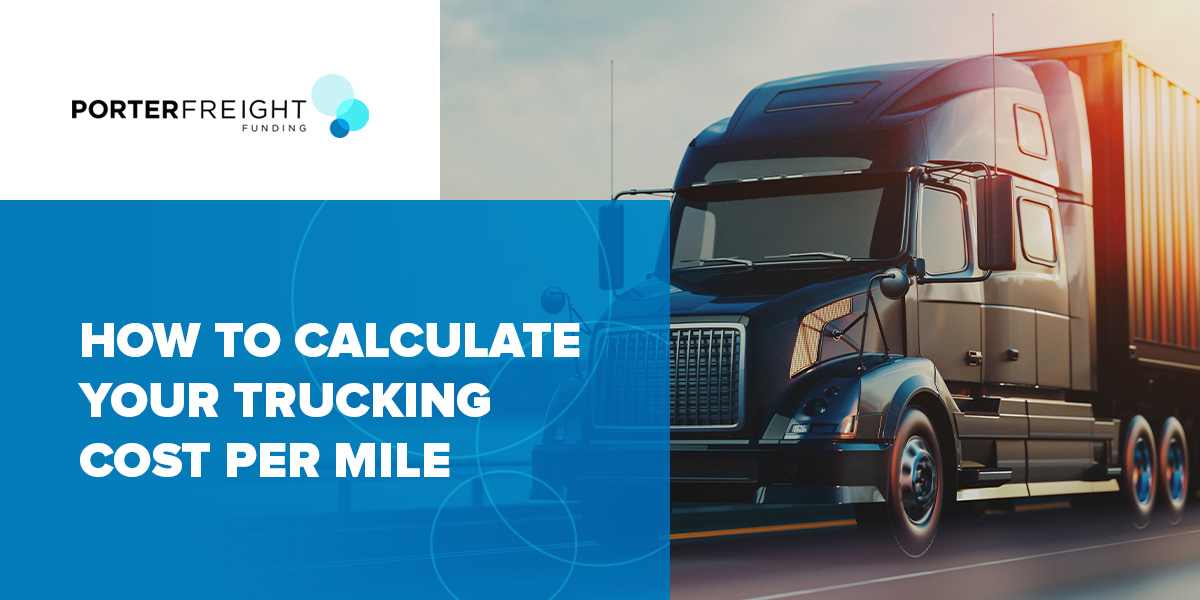What Does It Mean Out For Delivery

The shipping and logistics industry uses various terms and phrases to describe the different stages of package delivery. One such term is "Out for Delivery", which is a crucial status update for both shipping carriers and eager recipients awaiting their packages. This phrase holds significant meaning and provides valuable information about the current stage of a shipment's journey. In this article, we will delve into the details of what "Out for Delivery" entails, explore the process it signifies, and shed light on its implications for both shippers and recipients.
Understanding the “Out for Delivery” Status

When a package is marked as “Out for Delivery”, it signifies that the shipping carrier has picked up the shipment from its origin and is actively transporting it to the designated delivery location. This status indicates that the package is en route to its final destination and is a critical step in the delivery process. It serves as a confirmation that the shipment is no longer in transit but is being actively delivered by a courier or delivery driver.
The "Out for Delivery" status is typically assigned to a package when it is loaded onto a delivery vehicle, whether it's a truck, van, or other specialized transportation. At this stage, the package is considered to be in the hands of the delivery personnel, who will be responsible for ensuring its safe and timely arrival at the recipient's address.
The Delivery Process Unveiled
Once a package reaches the “Out for Delivery” stage, it undergoes a series of steps to ensure a successful delivery. Here’s a breakdown of the typical delivery process that occurs during this status:
- Route Planning: The delivery driver receives instructions and a carefully planned route to follow. This route takes into account the most efficient and timely delivery sequence for all packages assigned to the driver for that day.
- Package Sorting: Before hitting the road, the driver may sort the packages to streamline the delivery process. This involves organizing the shipments based on their destination addresses, ensuring a logical and efficient delivery order.
- Vehicle Loading: Packages are securely loaded onto the delivery vehicle, taking into consideration factors such as weight distribution and package size to ensure a safe and stable transportation process.
- Delivery Attempts: The delivery driver begins making attempts to deliver the packages to their respective recipients. This involves navigating to the designated addresses, following the planned route, and ensuring that each package reaches its intended recipient.
- Recipient Verification: Upon arrival at the delivery address, the driver verifies the recipient's identity and ensures that the package is being delivered to the correct person or location. This step helps prevent unauthorized access and ensures the security of the shipment.
- Signature Capture: For certain types of shipments, especially those that are high-value or require additional security, the recipient may be required to sign for the package upon delivery. This provides proof of delivery and ensures that the package has reached its intended destination.
- Proof of Delivery: After a successful delivery, the driver may capture a proof of delivery (POD) to confirm that the package has been received by the intended recipient. This documentation is crucial for record-keeping and provides evidence of the package's journey.
Real-Time Tracking and Updates
One of the advantages of the “Out for Delivery” status is the real-time tracking and updates it provides. Many shipping carriers offer tracking services that allow recipients to monitor the progress of their packages. This feature enables recipients to anticipate the arrival of their shipment and plan accordingly.
Tracking updates typically include the estimated time of arrival (ETA), which helps recipients prepare for the delivery and ensure someone is available to receive the package. Some carriers even provide more detailed information, such as the current location of the delivery vehicle and an approximate time frame for when the package will be delivered.
Additionally, tracking services often provide notifications and alerts to both shippers and recipients. These notifications can include updates on any delays or changes to the delivery route, ensuring that all parties are kept informed and can adjust their plans as needed.
Implications for Shippers and Recipients

The “Out for Delivery” status carries significant implications for both shippers and recipients. For shippers, this status signifies that their shipment is in the final stages of delivery and is being actively handled by the shipping carrier. It provides assurance that the package is on its way to the recipient and that the delivery process is underway.
Shippers can utilize the tracking information provided during the "Out for Delivery" status to monitor the progress of their shipments. This allows them to make informed decisions regarding any necessary adjustments to their inventory management, customer service, or logistics operations. For example, if a shipment is running late, shippers can proactively communicate with customers to manage expectations and potentially offer alternative solutions.
For recipients, the "Out for Delivery" status is a sign of anticipation and excitement. It indicates that their eagerly awaited package is on its way and will soon be delivered to their doorstep. This status update provides a sense of relief and assurance, knowing that the package is actively being delivered and is no longer in transit.
Recipients can use the tracking information to plan their day and ensure someone is available to receive the package. This is especially important for time-sensitive deliveries or shipments that require immediate attention upon arrival. By knowing the estimated time of delivery, recipients can make necessary arrangements, such as adjusting their work schedules or coordinating with neighbors to receive the package if they are unavailable.
Addressing Common Concerns
While the “Out for Delivery” status generally indicates a positive step in the delivery process, it’s essential to address some common concerns that may arise during this stage.
One concern is the potential for delays or missed deliveries. In some cases, factors beyond the control of the shipping carrier, such as weather conditions, traffic, or unforeseen circumstances, may impact the delivery schedule. It's important for both shippers and recipients to remain flexible and understand that occasional delays are a possibility.
To mitigate the impact of delays, shipping carriers often provide real-time updates and notifications. These updates help keep all parties informed and allow for adjustments to be made. Additionally, many carriers offer delivery options that provide greater flexibility, such as delivery windows, delivery instructions, or alternative delivery locations.
Another concern that may arise during the "Out for Delivery" status is the potential for package theft or damage. While shipping carriers take extensive measures to ensure the security and integrity of shipments, it's always a good practice for recipients to be vigilant and take necessary precautions.
Recipients can implement measures such as installing security cameras, ensuring their delivery address is visible and easily accessible, and considering the use of package locks or secure delivery boxes. These precautions can help minimize the risk of theft or damage and provide an added layer of protection for valuable or sensitive shipments.
Ensuring Successful Deliveries
To ensure successful deliveries and a positive experience for all parties involved, both shippers and recipients can take proactive steps to facilitate a smooth delivery process.
Shippers can provide clear and accurate shipping information, including detailed recipient addresses and any necessary delivery instructions. This helps reduce the likelihood of misdeliveries or delays caused by ambiguous or incorrect information. Additionally, shippers can utilize tracking services to monitor the progress of their shipments and take prompt action if any issues arise.
Recipients, on the other hand, can take an active role in preparing for the arrival of their packages. This includes ensuring someone is available to receive the shipment during the expected delivery window. If this is not possible, recipients can consider alternative delivery options, such as arranging for a trusted neighbor or family member to receive the package on their behalf.
Moreover, recipients can provide clear delivery instructions to the shipping carrier. These instructions can include specific delivery preferences, such as preferred delivery locations, instructions for leaving packages in a secure area, or any special requirements for high-value or fragile items. Clear communication ensures that the delivery process aligns with the recipient's needs and preferences.
Future Implications and Innovations
The shipping and logistics industry is constantly evolving, and the “Out for Delivery” status is no exception. As technology advances, we can expect to see innovations that further enhance the delivery process and improve the overall experience for shippers and recipients.
One area of focus is the development of more sophisticated tracking systems. These systems may utilize advanced GPS technology, real-time location data, and predictive analytics to provide even more accurate and detailed tracking information. This would enable shippers and recipients to have a clearer understanding of the package's journey and anticipate its arrival with greater precision.
Additionally, the integration of artificial intelligence (AI) and machine learning algorithms can enhance the efficiency and accuracy of the delivery process. AI-powered systems can optimize delivery routes, predict delivery times with greater accuracy, and even automate certain aspects of the delivery process, such as package sorting and loading.
Furthermore, the rise of drones and autonomous vehicles in the logistics industry holds the potential to revolutionize the "Out for Delivery" status. These technologies can offer faster and more efficient delivery options, especially in remote or hard-to-reach areas. Drones and autonomous vehicles can navigate complex routes and deliver packages directly to recipients, reducing the reliance on traditional delivery methods.
| Key Takeaways |
|---|
| "Out for Delivery" signifies the active transportation of a package to its final destination. |
| This status involves a well-planned delivery process, including route planning, package sorting, and recipient verification. |
| Real-time tracking and updates provide valuable information for both shippers and recipients. |
| Shippers can monitor their shipments and make informed decisions, while recipients can plan and prepare for the delivery. |
| Proactive measures and clear communication ensure successful deliveries and a positive experience. |

Conclusion
The “Out for Delivery” status is a significant milestone in the shipping and logistics journey, indicating that a package is actively being delivered to its recipient. This status provides valuable insights into the delivery process, offering real-time tracking and updates. By understanding the implications and taking proactive measures, both shippers and recipients can ensure a smooth and successful delivery experience.
As the industry embraces technological advancements and innovative delivery solutions, the future of "Out for Delivery" looks promising. With enhanced tracking systems, AI-powered optimizations, and the potential of drones and autonomous vehicles, the delivery process will become even more efficient, accurate, and accessible. Stay tuned as we continue to explore the fascinating world of shipping and logistics, where every package has a story to tell.
How accurate is the estimated time of arrival (ETA) during the “Out for Delivery” status?
+The accuracy of the ETA can vary depending on various factors such as traffic conditions, weather, and the volume of deliveries. While shipping carriers strive to provide accurate ETAs, unexpected delays can occur. It’s important to treat the ETA as an estimate and remain flexible.
What happens if the recipient is not available to receive the package during the “Out for Delivery” status?
+If the recipient is unavailable, the delivery driver may attempt to leave the package in a secure location, such as with a neighbor or in a designated safe place. However, some carriers may require a signature for certain deliveries, in which case the package may be returned to the carrier for redelivery or held at a nearby facility for pickup.
Can I track my package in real-time once it’s “Out for Delivery”?
+Yes, many shipping carriers offer real-time tracking services during the “Out for Delivery” status. These services provide updates on the package’s location and estimated time of arrival, allowing recipients to anticipate and prepare for the delivery.
Are there any security measures in place to prevent package theft during the “Out for Delivery” status?
+Shipping carriers implement various security measures to protect packages during transit. These measures may include GPS tracking, secure delivery vehicles, and real-time monitoring. Additionally, recipients can take their own precautions, such as installing security cameras or using package locks, to further enhance the security of their deliveries.


